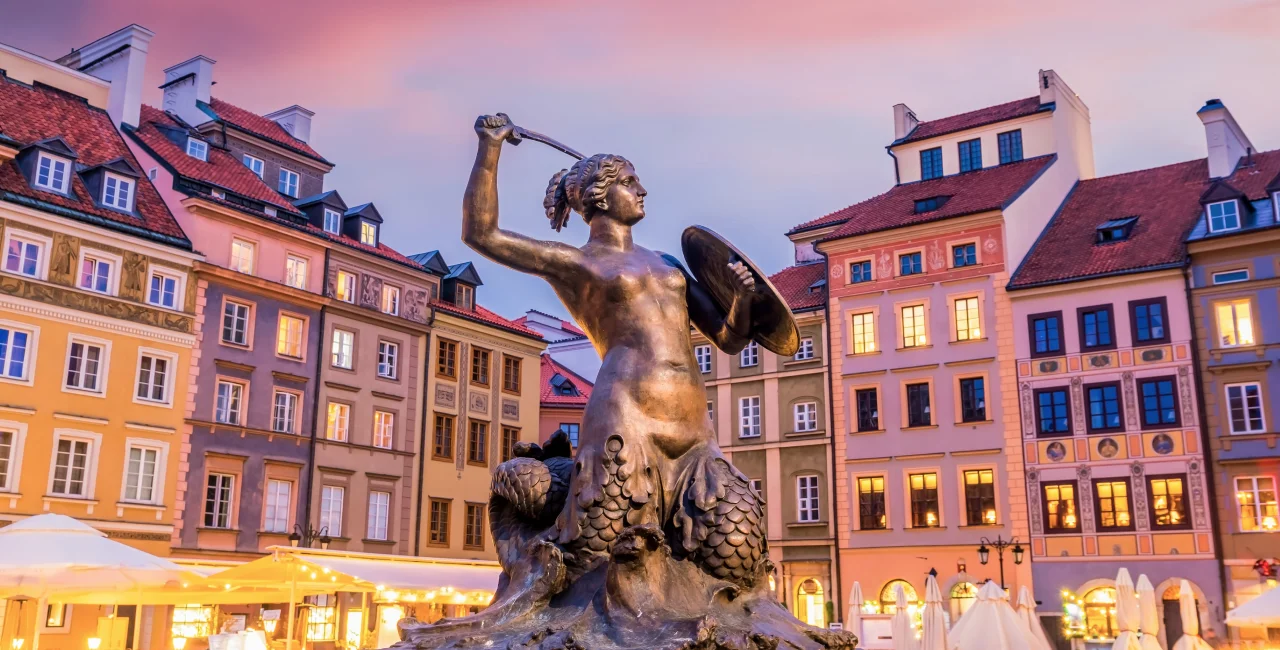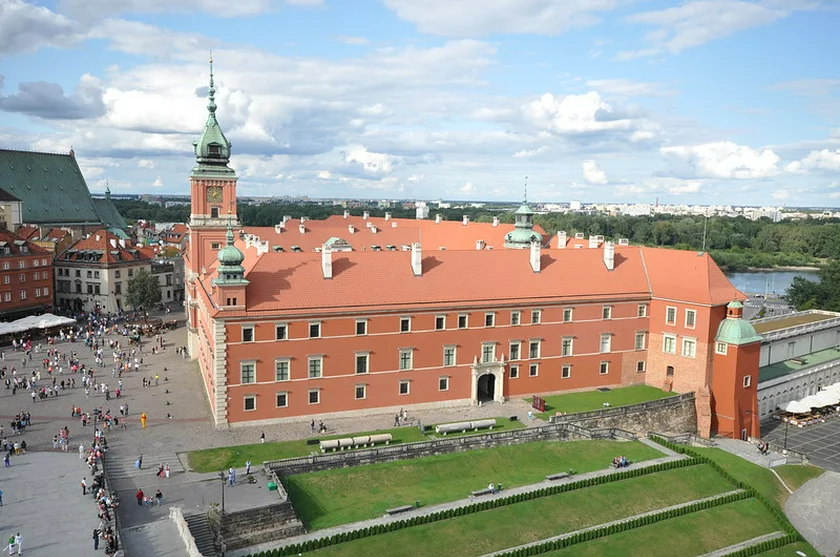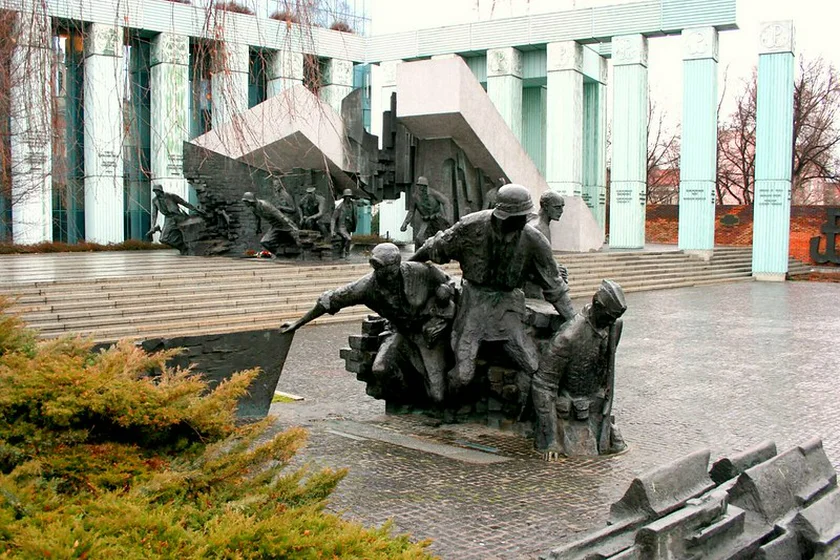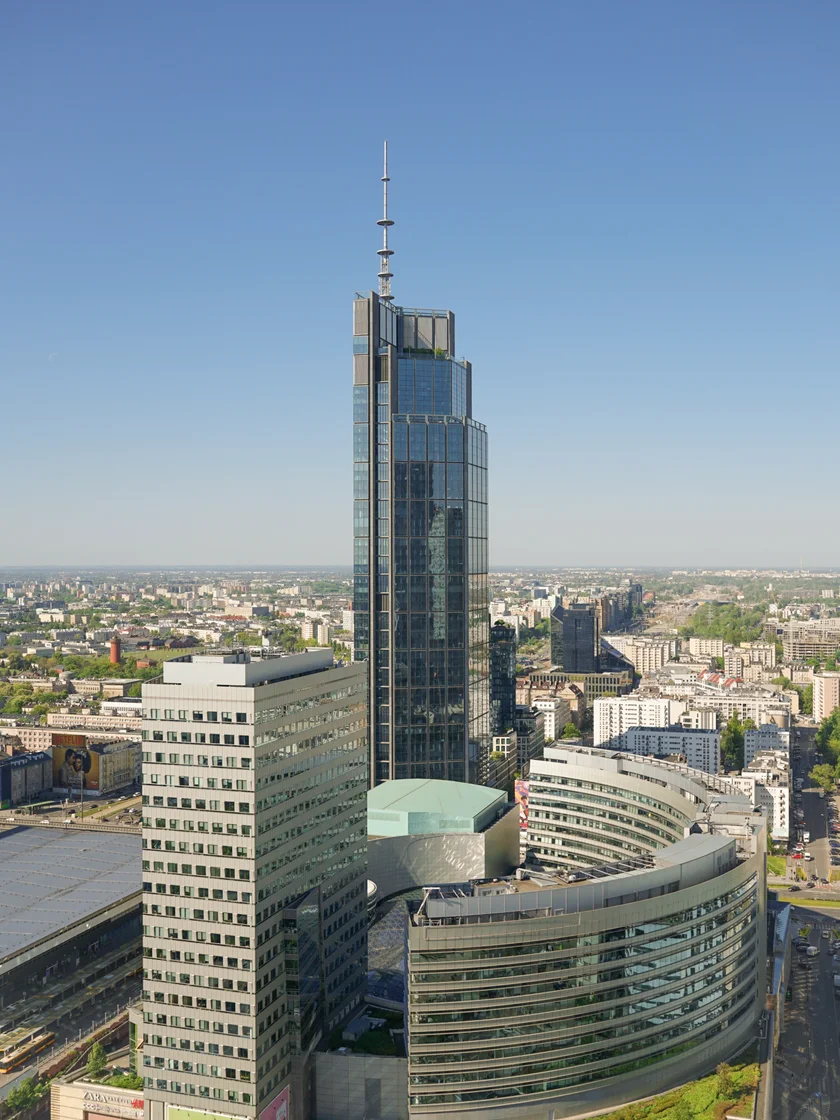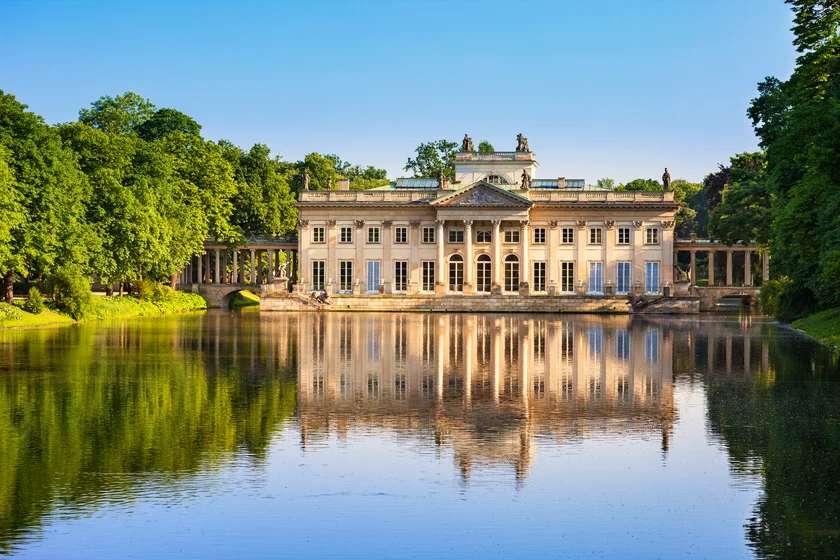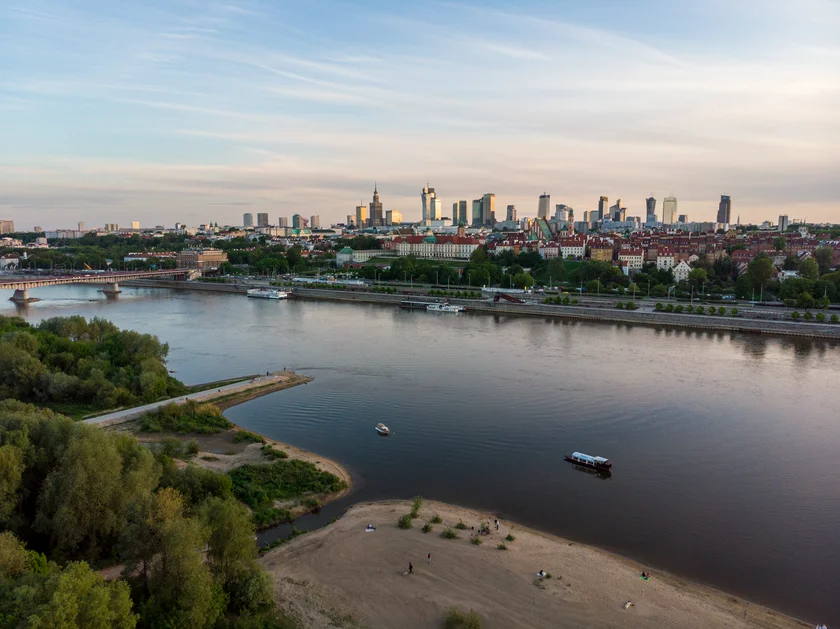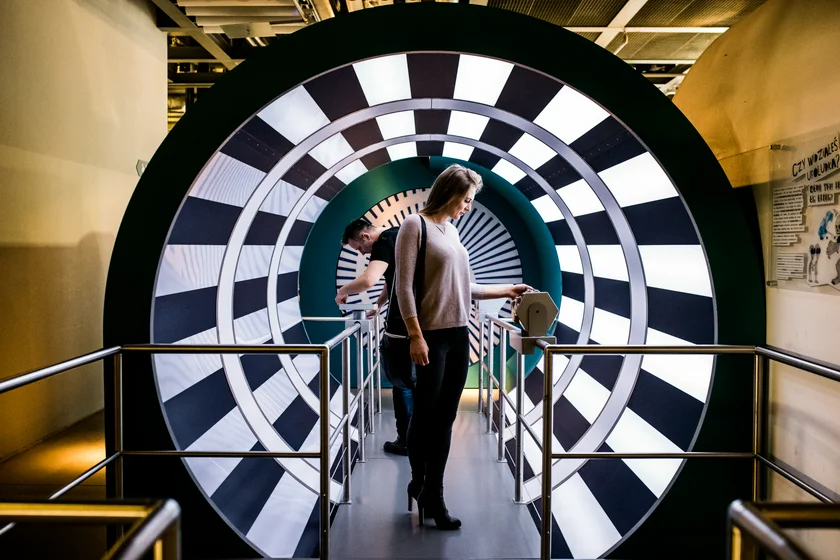Picture a city that takes less than an hour to reach by plane, offers a fascinating blend of history and modernism, and is relatively easy on the wallet. Overlooked by many, the Polish capital of Warsaw offers a fulfilling city break that provides profound and picturesque sights, good food, and lessons from years gone by.
A voyage into the past
The first thing you’ll notice upon your visit is that Warsaw is entrenched in history. More than 85 percent of the city center was obliterated during World War II, but its reconstruction gave rise to beautiful architecture that captures pre-war life. The historic center of Warsaw is, in fact, on the UNESCO World Heritage Site.
Walking through the winding streets of the capital’s Old Town, which dates back to the 13th century, gives you a chance to see a mixture of original, centuries-old buildings – such as the Royal Castle (which you can enter) – and restored post-war houses designed in 18th-century style.
The Warsaw Barbican and partly ruined city walls surrounding the Old Town harken back to several conflicts that occurred in past centuries as the city jostled to maintain its borders. A deeply religious country both in the past and today, grandiose churches are commonplace in the historic center – the huge Gothic St. John's Archcathedral, built in the early 14th century, stands out.
A wide range of museums
Poland boasts some of the most modern museums in all of Central Europe: perfect for foreigners, almost all of them offer English-language displays and audio guides.
Several museums capture Warsaw’s plight during World War II – among the most heartrending is the Warsaw Uprising Museum, which shows Poles’ attempts to liberate their capital. Original notes, government letters, army attire, weaponry, and street signs are spread around the museum, as an English audio guide takes you through the context of the deadly two-month conflict.
Memories of the Warsaw Uprising – seeing around 200,000 Poles killed – are not just connected to the museum itself. You’ll see several potholes around the capital’s sidewalks: these were used by soldiers during the uprising as a means of escape, hiding, and transport. The massive Warsaw Uprising Monument is also one of Poland’s most important statues and captures the significance of the event in Poland’s history.
Walking through the capital also provides you with omnipresent reminders of Poland’s plight during World War II. The center of the city brings you to the site of the old Warsaw Ghetto, which had been one of the largest Nazi ghettos in all of Europe.
As you walk through the area, you’ll see boundary markers on the sidewalks, illustrating the exact spots where the infamous ghetto border wall ran through. Fragments of the original wall and monuments coupled with English-language information boards also serve as a valuable lesson of the past.
After the ghetto’s 1943 demolition, new life was breathed into the area – many now call it “the Manhattan of Poland” due to its upmarket vibe and modern, skyscraper-filled landscape.
A world-famous park and the EU’s tallest building
Indeed, Warsaw’s modern feel is palpable when you visit it. It may come as a surprise to learn that the EU’s tallest building is actually in the Polish capital; the newly designed and majestic Varso Tower – standing tall at 310 meters – epitomizes Warsaw’s impressive development following the end of communism.
One of the main sights from the top of the tower is the city’s Soviet-made Palace of Culture and Science – at the time of its completion in 1955, the eight-tallest building in the world. The juxtaposition of Varso Tower and the communist building is perhaps an apt reflection of Warsaw itself: a modern city that doesn’t forget its past troubles.
A stroll into Warsaw’s central district brings you to the luscious Łazienki (or Royal Baths) Park, a rolling green space that for centuries had been used by Polish royalty and nobility.
Just walking around the grounds acquaints you with famous figures from Poland’s past. Directly outside one entrance is a statue of Marshall Jozef Piłsudski, a man viewed as the father of the Second Polish Republic in 1918. Within the park, you'll also discover a striking statue honoring one of the world’s most famous composers, the Polish Fryderyk Chopin.
A statue of King of Poland Jan III Sobieski – one of the country’s most important figures due to his role in fending off the Ottoman Army – rests opposite the classicist Palace on the Isle, a 17th-century royal residence that in 2019 was the 11th-most visited palace and monument in the world.
New, functional, and alternative
Aside from its majestic buildings, Warsaw offers some more alternative, hip areas that offer an alternative perspective of the city. Downtown lies Elektrownia Powiśle – a fascinating site of a now-defunct power plant that has been transformed into a multipurpose complex, filled with stylish bars, restaurants, and shops.
You can even visit Prague from Prague – kind of. Walking a few hundred meters east brings you to Warsaw’s more edgy Praga district (despite the name, it has no relation to the Czech capital).
This atmospheric area bears some resemblance to Prague’s Žižkov district. Filled with bars and with a real sense of character, it also offers various cultural attractions, such as the Koneser Center. Located on the premises of the former Warsaw Vodka Factory – now converted into the Museum of Polish Vodka – the site has retained its historical neo-Gothic redbrick buildings and offers an art and events center with exhibitions, concerts, and dining.
Bordering Praga is also Warsaw’s famous Vistula River (Poland’s longest), which runs through the center of the Polish capital. Walking down the riverbank gives you countless bars, restaurants, and cafes to choose from, as well as affordable boat tours that show the center of Warsaw from a different perspective.
For something more alternative and authentic, check out one of Poland’s largest open-air markets: Hala Mirowska. At over 100 years old, this former bus depot today contains hundreds of stalls with a wide range of offerings – from fresh fruit and meat to confectionary, clothes, and even 24-hour flower stalls. Standing the test of time, the walls surrounding the market survived World War II, as epitomized by bullet holes dotted around them.
Dip into Polish cuisine and nightlife
Walking around Warsaw’s countless sights will leave you feeling peckish. Thankfully, the Polish capital has a smorgasbord of fine dining options to choose from. And the best thing? They are not as expensive as you may expect.
In the heart of Warsaw, venture over to one of Poland’s only 24-hour restaurants, Ćma – part of the Mateusz Gessler culinary chain – where you can indulge in typical Polish cuisine such as pierogi (dumplings), gołąbki cielęce (veal-stuffed cabbage), or żurek (a traditional sour rye soup). Consider also trying bigos – a traditional Polish stew of sauerkraut and pork mixed with vegetables. If you’re feeling adventurous, you can also experiment with stewed geese stomachs (known as gęsi pipek) or traditional Polish fish soup.
Also in Prague’s downtown is the classy, wine-focused Kieliszki na Próżnej (Glasses on Próżna Street) restaurant, named in the 2023 Michelin Guide. Its sophisticated and rich dishes won’t eat away into your bank balance: the lunch menu, which includes an appetizer and the dish of the day, costs just PLN 45 (about CZK 250). Not only will you be able to try unique Polish cheeses, such as Bursztyn and Górski Sudecki, but you’ll be spoiled by a massive selection of international wines – white, red, rosé, orange, and sparkling – from countries such as Italy, Hungary, Spain, and of course Poland.
The Elixir – House of Vodka restaurant in central Warsaw also lives up to its name: uniquely, the restaurant recommends different shots of vodka before and after trying a main course (a culinary technique known as “food pairing.”) This, then, is your chance to experiment with the country’s most famous spirits: take your pick out of Belvedere, Żubrówka, and Sobieski while enjoying specialties popular in Poland such as meat jelly (made from pigs’ feet) or black pudding (known as kaszanka).
Ambling down the lengthy Nowy Świat (New World) Street in the center also gives you a taste of Warsaw’s bustling nightlife – you may stumble upon the Pijana Wiśnia (Drunken Cherry) bar, which offers a special cherry liquor, served either hot or cold.
An opportunity to learn
Countless other attractions will make your stay in Warsaw worthwhile. For something more alternative, the capital’s Neon Museum walks you through the almost omnipresent usage of luminous street signs in the capital during communist times – it is one of the only museums of its type in the world.
Science enthusiasts can indulge in the Copernicus Science Center, named after Polish-born astronomer Nicolaus Copernicus, and people who want to learn more about Poland’s cultural history can visit the History of Polish Jews Museum.
Convenience in transport and payments
Warsaw has an affordable and well-connected transport system – with two metro lines – as well as an extensive tram and bus network. Handily, you can catch bus number 175 directly from Warsaw Chopin Airport, which will see you reach the center in under half an hour.
You won’t spend much at all on public transport prices in the capital; a 20-minute ticket that covers the metro, bus, and tram costs PLN 3.40; about CZK 19. Alternatively, a three-day pass costs just PLN 36 (CZK 200), which allows you to use all public transport options in the center and greater Warsaw (zone 1). The capital is also a very card-friendly city, meaning you will seldom need to worry about carrying cash – be it for public transport or shopping.
Warsaw may not be the first city that comes to mind when thinking of a quick city break from Czechia. Brimming with history, beauty, bars, and restaurants, the Polish capital will doubtlessly leave an impression on you for years to come.
This article was written in association with Polish Tourism. See our partner content policies here.












 Reading time: 7 minutes
Reading time: 7 minutes 